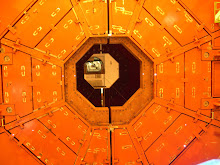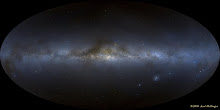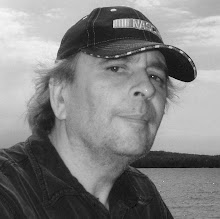 PD Smith writes on science and literature as cultural history. His articles and reviews have appeared in the Times Literary Supplement, the Guardian Review, the Independent and the essay below is from his recent column in 3QuarksDaily. His biography Einstein was published in 2003. Doomsday Men: The Real Dr Strangelove and the Dream of the Superweapon, Penguin and St Martin's Press, is his new book on the dawn of the Atomic Age. For links, reprints and his latest blogging, see his website Kafka's mouse.
PD Smith writes on science and literature as cultural history. His articles and reviews have appeared in the Times Literary Supplement, the Guardian Review, the Independent and the essay below is from his recent column in 3QuarksDaily. His biography Einstein was published in 2003. Doomsday Men: The Real Dr Strangelove and the Dream of the Superweapon, Penguin and St Martin's Press, is his new book on the dawn of the Atomic Age. For links, reprints and his latest blogging, see his website Kafka's mouse.PD Smith's "Someday This Crazy World Will Have To End" touches the same nerve in CERN's LHC megaproject that promises a new nuclear physics and a new world. The same resistance to an open enquiry or discussion of the potential dangers and merits of the LHC that Dr Edward Teller hotly dismissed about the Bomb, surfaces in CERN's disregard of outside criticism as in my article "Politics And Science At The LHC" and CERN's Dr Bob McElrath's hostile reply in his Comment on it. PD Smith also explores the relationship of Science to Science Fiction here and in Doomsday Men, as I have in my satiric essay, "The Black Hand Of Dr CERN".
The other day I had an email from an angry reader. He accused me of maligning the good name of scientists in my cultural history of superweapons. Scientists were not “doomsday men” and the phrase “an organization of dangerous lunatics” should not be applied to the secret laboratories where scientists developed superweapons. As someone who had worked in the nuclear industry, he wanted to make it plain to me that it was only thanks to such “lunatics” and their many scientific discoveries that I could enjoy a comfortable and healthy life, free from the fear of Nazism and Communism.
I must admit I was slightly taken aback by the heartfelt anger of his email. It was clear there was not going to be a meeting of minds. But in the end we did have an amicable and interesting exchange of emails.
I explained that the title of my book, Doomsday Men, was borrowed from JB Priestley’s 1938 novel of the same name, about how an atomic doomsday device is created at a secret laboratory in the Mojave Desert. My correspondent found the title provocative and even cheap. I hoped
 other readers would see the irony, and, as my book is about how film and fiction prefigures our obsession with superweapons, insisted it was appropriate to use a title that wouldn’t have been out of place in the pulps.
other readers would see the irony, and, as my book is about how film and fiction prefigures our obsession with superweapons, insisted it was appropriate to use a title that wouldn’t have been out of place in the pulps.Indeed, the whole point of the book was not to blame scientists for weapons of mass destruction, but to show how humankind’s most terrible yet ingenious inventions were inspired by a desperate dream, one that was shared by a whole culture, including writers like Jack London and HG Wells, a dream of peace and scientific utopia. In a sense, we are all doomsday men. After all, it was Wells who coined the phrase “atomic bomb” before even World War I. And it was also Wells who in 1933 described scientists developing weapons of mass destruction in a secret laboratory as “an organization of dangerous lunatics”.
The great scientific romancer HG Wells could hardly be described as hostile to science or scientists. It was his anger at the misuse of science to create weapons of mass destruction that led him to condemn such scientists. I share that anger and it prompted me to explore the cultural reasons why people from all walks of life came to think that superweapons were a solution to human problems.
Readers of Wells’s fiction were familiar with mad scientists – Griffin or Moreau, for example – as well as those who hoped to improve the world, men like Holsten and Karenin in The World Set Free (1914). In the early years of the twentieth century, popular culture turned scientists into saviours who freed the world from war with awesome superweapons. But the experience of gas warfare, then biological weapons, and finally the atomic bomb gradually changed public perceptions. As fears grew about superweapons, their creators who had transformed the laws of nature into instruments of total destruction were increasingly depicted as mad scientists. Those who had been raised up to be gods, were later cast down as devils – or at least as acolytes of that master of megadeath, Dr Strangelove.
 In the atomic age, as the public learned to live with first the A-bomb, then the H-bomb, and finally the world-destroying cobalt or C-bomb, scientists were stereotyped as mad, bad and dangerous (to borrow Christopher Frayling’s phrase). “What you are doing is mad, it is diabolic,” says the scientist’s assistant in Ernest B. Schoedsack’s movie Dr Cyclops (1940): “You are tampering with powers reserved to God.” In the classic science fiction film The Thing (1951), based on John W.
In the atomic age, as the public learned to live with first the A-bomb, then the H-bomb, and finally the world-destroying cobalt or C-bomb, scientists were stereotyped as mad, bad and dangerous (to borrow Christopher Frayling’s phrase). “What you are doing is mad, it is diabolic,” says the scientist’s assistant in Ernest B. Schoedsack’s movie Dr Cyclops (1940): “You are tampering with powers reserved to God.” In the classic science fiction film The Thing (1951), based on John W.Campbell’s story about alien invasion, the sinister scientist Dr Carrington is prepared to sacrifice human lives in the cause of science: “Knowledge is more important than life... We’ve only one excuse for existing: to think, to find out, to learn…It doesn’t matter what happens to us.”
Such scientists would be the end of us all, people feared. “What hope can there be for mankind…when there are such men as Felix Hoenikker to give such playthings as ice-nine to such short-sighted children as almost all men and women are?” asked Kurt Vonnegut in the brilliant Cat’s Cradle (1963). As far as film and fiction were concerned, scientists were not just Strangelovian doomsday men. Their whole outlook on life was positively warped. “If the murders of twelve innocent people can help save one human life it will have been worth it”, reasons Doctor Necessiter in The Man With Two Brains (1983).
But these are, of course, mere fictions. As physicist Sidney Perkowitz points out in his enjoyable survey of Hollywood Science (2007), although they may on occasion appear somewhat arrogant, most scientists are not megalomaniacs: “few scientists have a burning desire to rule the world; typically, they don’t even enjoy managing people and research budgets”. He does, however, concede that one stereotype may have a basis in truth – the image of scientists as being sartorially challenged: “The rumpled look is a badge of authority; to scientists, the ‘suits’, formally dressed bureaucrats, are members of a despised race.” (I’m aware this may be a controversial view. In the interest of balance, I urge readers to also consult the excellent Geek Chic, ed by Sherrie A. Inness, especially chapter 2, "Lab Coats and Lipstick", by L.
Jowett.)
But Freeman Dyson suggests truth may be every bit as strange as fiction. The physicist, who worked on weapons projects as well as the Project Orion atomic spaceship in the 1950s, thinks there’s more than a grain of truth in the Strangelove stereotype. "The mad scientist is not just a figure of speech," says Dyson, "there really are such people, and they love to play around with crazy schemes. Some of them may even be dangerous, so one is not altogether wrong in being scared of such people."
 Recently, I was powerfully reminded of Dyson’s comment while reviewing the reissue of Dan O’Neill’s classic nuclear history The Firecracker Boys (1994). In 1958, physicist Edward Teller, the self-styled father of the H-bomb, turned up in Juneau, Alaska, and held an impromptu news conference. He was there to unveil Project Chariot, a plan to create a deep-water harbour at Cape Thompson in northwest Alaska using thermonuclear bombs. Seventy million cubic yards of earth would be shifted instantly using nuclear explosions equivalent to 2.4 million tons of TNT. That’s 40% of all the explosive energy expended in World War II. Some firecracker.
Recently, I was powerfully reminded of Dyson’s comment while reviewing the reissue of Dan O’Neill’s classic nuclear history The Firecracker Boys (1994). In 1958, physicist Edward Teller, the self-styled father of the H-bomb, turned up in Juneau, Alaska, and held an impromptu news conference. He was there to unveil Project Chariot, a plan to create a deep-water harbour at Cape Thompson in northwest Alaska using thermonuclear bombs. Seventy million cubic yards of earth would be shifted instantly using nuclear explosions equivalent to 2.4 million tons of TNT. That’s 40% of all the explosive energy expended in World War II. Some firecracker.Locals said they didn’t need a harbour. They also raised understandable concerns about radioactivity. After all, the year before, Nevil Shute had published On the Beach, one of the best-selling of all nuclear fictions (four million copies by 1980), in which the world dies a lingering death caused by fallout from a nuclear war fought with cobalt bombs. Teller was unfazed by the criticisms. That year he had defended atmospheric nuclear tests, claiming such fallout was no more dangerous than “being an ounce overweight”. He tried to reassure the Alaskans: “We have learned to use these powers with safety”. He even promised them a harbour in the shape of a polar bear.
Teller and his fellow scientists at the Livermore Laboratory in California were on a mission to redeem the nuclear bomb. They wanted to overcome the public’s irrational “phobic” reactions to nuclear weapons. “Geographical engineering” was the answer, said Teller: “We will change the earth’s surface to suit us.” The Faustian hubris of the man appeared to know no bounds. Dubbed in the press “Mr H-Bomb”, Teller even admitted to a “temptation to shoot at the moon” with nukes. You need a new Suez Canal? Blast it out with my thermonuclear bombs. Or how about turning the Mediterranean into a freshwater lake to irrigate the Sahara? All you need to do
is to close the Straits of Gibraltar by detonating a few H-bombs (clean ones, of course, absolutely guaranteed). No problem. We can do it – trust me, I’m a physicist.
Dan O’Neill interviewed Teller. Or at least he tried to. As soon as he started asking questions, Teller “cursed loudly and with great facility” and tore up the release form he had just signed to allow O’Neill to use the interview. Despite Teller’s hissy fit, O’Neill’s remarkable book shows how government agencies lied to local people, attempted to bribe scientists with promises of research funding, and manipulated the Alaskan media, which demonstrated “more sycophancy than scrutiny”. But a grass-roots movement of local Alaskans – Eskimo whale hunters, bush pilots, church ladies, and log-cabin conservationists – joined forces with a few principled scientists to successfully oppose America’s nuclear establishment, and in so doing sowed the seeds of modern environmentalism.
Perhaps unsurprisingly, Teller devotes a mere page to this episode in his 2001 Memoirs. Les Viereck, a “soft-spoken and shy” biologist, whose research helped expose the real cost of Teller’s plans, lost his university position because of his opposition to Project Chariot. In a letter, he told his employer: “A scientist’s allegiance is first to truth and personal integrity and only secondarily to an organized group such as a university, a company, or a government.” Now there’s a scientist you could be proud of. HG Wells would have turned him into a heroic character, the kind of scientist who might really save the world.
 But perhaps that’s where the problem lies. As the Marquise von O tells the Russian Count at the end of Kleist’s great novella, “she would not have seen a devil in him then if she had not seen an angel in him at their first meeting”. We burden scientists with such impossibly high expectations: they’re going to discover a source of unlimited energy, invent a weapon that will make war impossible, and along the way find a cure for cancer. But when the philosopher’s stone turns into a Pandora’s box, we turn our saviours into Strangeloves. Despite their miraculous discoveries, scientists are only human. We shouldn’t forget that.
But perhaps that’s where the problem lies. As the Marquise von O tells the Russian Count at the end of Kleist’s great novella, “she would not have seen a devil in him then if she had not seen an angel in him at their first meeting”. We burden scientists with such impossibly high expectations: they’re going to discover a source of unlimited energy, invent a weapon that will make war impossible, and along the way find a cure for cancer. But when the philosopher’s stone turns into a Pandora’s box, we turn our saviours into Strangeloves. Despite their miraculous discoveries, scientists are only human. We shouldn’t forget that.O’Neill is rightly scathing about Teller’s role in Project Chariot: it seems Teller and his colleagues were more interested in improving the public image of nuclear weapons than in the lives of Alaskans. A Los Alamos colleague of Teller accused the brilliant scientist of becoming corrupted by his "obsession for power". According to Emilio Segrè, Teller was "dominated by irresistible passions" that threatened his "rational intellect". Another colleague said simply, "Teller has a messianic complex".
Thankfully, for every Teller there is a Les Viereck. If you don’t believe me, then read Mind, Life, and Universe (2007), a wonderfully inspiring collection of interviews with scientists about their lives and work, edited by Lynn Margulis and Eduardo Punset.
But despite this, sometimes a dark suspicion creeps up on me, a nagging fear that somewhere out there a Dr Hoenikker is hard at work, intoxicated by his own genius and the desire for ultimate knowledge. Like Teller, this phantom Strangelove has forgotten Joseph Rotblat’s wise words: “a scientist is a human being first, and a scientist second”. All I can do at such moments is console myself by reciting the well-known Bokononist Calypso:
“Someday, someday, this crazy world will have to end,
And our God will take things back that He to us did lend.
And if, on that sad day, you want to scold our God,
Why go right ahead and scold Him. He’ll just smile and nod.”
--Copyright (c) 2008 PD Smith /All Rights Reserved
 Cointrin
Cointrin

























No comments:
Post a Comment